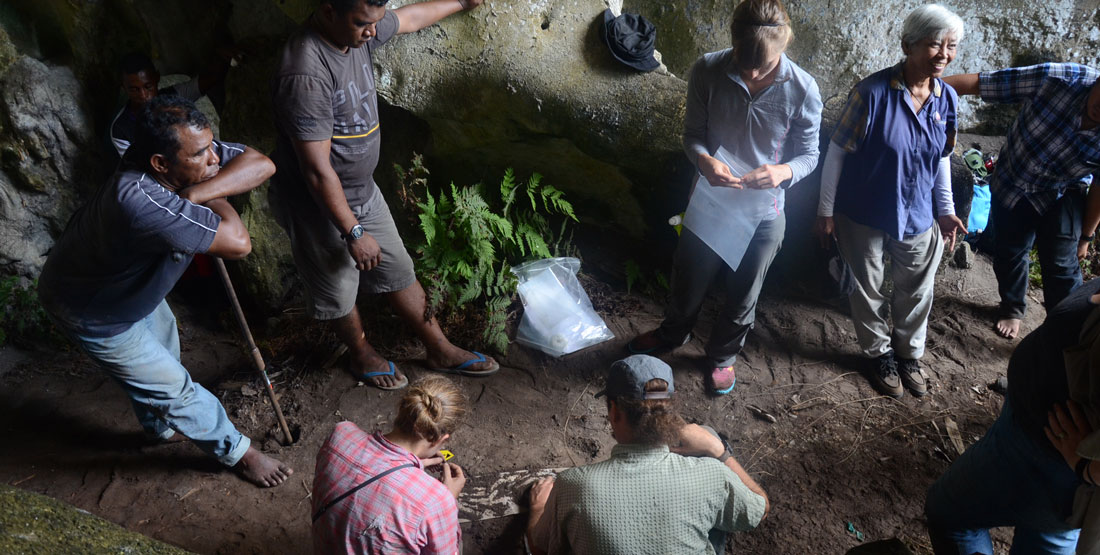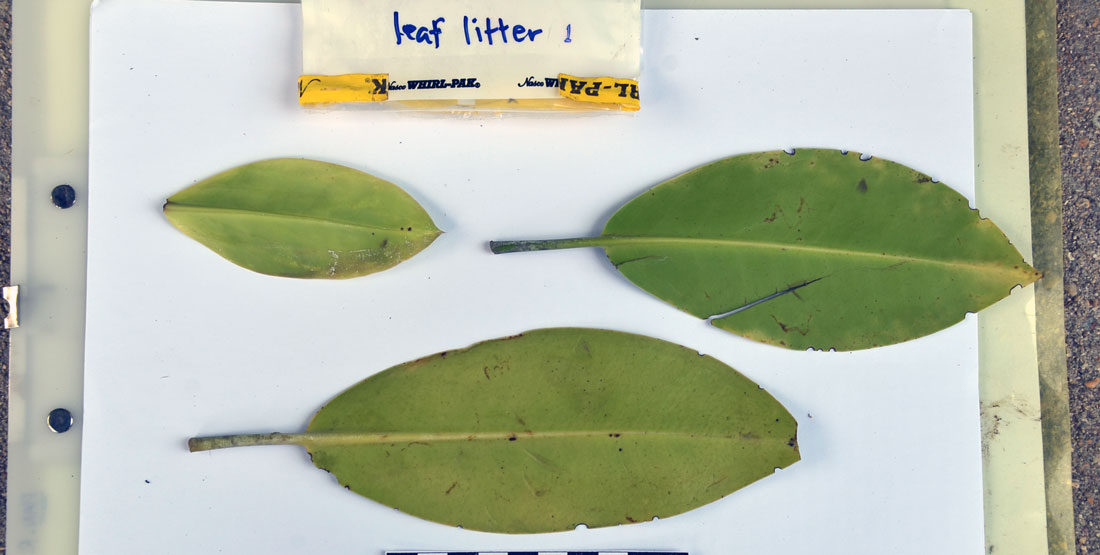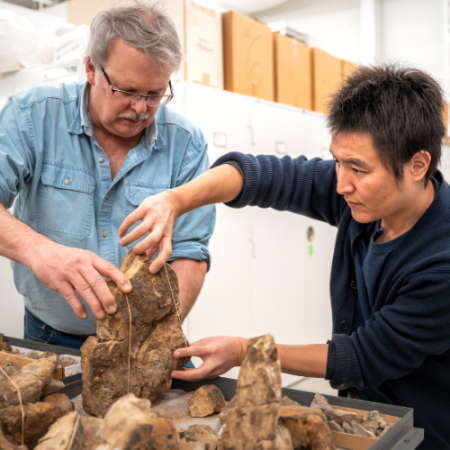Peter Lape, curator of archaeology and UW anthropology professor, is searching for answers in the islands of eastern Indonesia. Very few archaeological sites span the pre- and post-farming periods in this region, making it difficult to understand the factors that might have caused people to change their livelihoods.
Beginning 4,000 years ago, a revolution swept through Island Southeast Asia. People shifted from living solely on wild foods to farming and raising domestic animals. Why did this change in livelihood occur?
Lape theorizes that long periods of stable rainfall, without significant drought, may have encouraged farming. He is collaborating with Dr. Julian Sachs in the UW oceanography school to reconstruct prehistoric rainfall from the mud of local mangrove swamps. Mangrove leaves adjust their chemistry to local salinity levels. When the leaves drop to the ground, they get buried in layers of mud.
Lape’s team drilled nearly 100 cores up to 1.5 meters deep, which represented over 3,500 years of mangrove leaf deposits—potentially one of the longest prehistoric rainfall records recovered from Island Southeast Asia.
The links between rainfall and farming will also be useful in understanding how farmers respond to future climate changes, particularly as drought becomes more common.
See more from archaeology.




